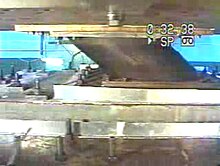
Back Seismisk risiko Danish Σεισμική διακινδύνευση Greek Riesgo sísmico Spanish ریسک زمینلرزه Persian Seisminen riski Finnish Risque sismique French Rischio sismico Italian 地震危険度 Japanese 지진위험도 Korean Sismik risk Turkish

Seismic risk or earthquake risk is the potential impact on the built environment and on people's well-being due to future earthquakes.[1] Seismic risk has been defined, for most management purposes, as the potential economic, social and environmental consequences of hazardous events that may occur in a specified period of time.[2][3] A building located in a region of high seismic hazard is at lower risk if it is built to sound seismic engineering principles. On the other hand, a building located in a region with a history of minor seismicity, in a brick building located on fill subject to liquefaction can be as high or higher risk.
A special subset is urban seismic risk which looks at the specific issues of cities. Risk determination and emergency response can also be determined through the use of an earthquake scenario.
- ^ "EFEHR | What is earthquake risk?". www.efehr.org. Retrieved 2024-04-08.
- ^ Baker, Jack; Bradley, Brendon; Stafford, Peter (2021). Seismic Hazard and Risk Analysis. Cambridge University Press. ISBN 9781108425056. Retrieved February 9, 2022.
- ^ Seismic risk evaluation for an urban centre. 250TH ANNIVERSARY OF THE 1755 LISBON EARTHQUAKE
© MMXXIII Rich X Search. We shall prevail. All rights reserved. Rich X Search